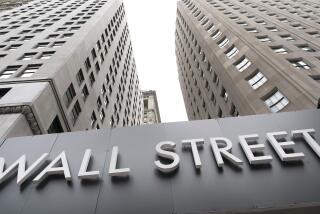Indicators Post Biggest Drop Since Early 1996
- Share via
WASHINGTON — The U.S. index of leading economic indicators showed the biggest drop in September in more than five years, a sign last month’s terrorist attacks may prolong the slowdown through the first quarter of 2002.
The Conference Board’s gauge of the economy over the next three to six months fell 0.5% last month after falling 0.1% in August.
The last time the index fell more was a 0.7% decline in January 1996, when a blizzard paralyzed the U.S. East Coast.
Falling stock prices and rising jobless benefit claims eroded consumer confidence in September and pushed down the leading index, as Americans absorbed the shock of the worst terrorist violence on U.S. soil.
Companies such as Ashland Inc., which produces jet fuel, Valvoline motor oil and construction materials, say shoppers’ attitudes have changed.
“The consumer seems to be going into a very defensive mode, and that is ultimately affecting some of our chemical businesses,” said Paul W. Chellgren, Ashland’s chief executive.
Analysts had expected a 0.5% decrease, according to a Bloomberg News survey. The back-to-back monthly declines were the first since the end of 2000, when the index fell for three straight months.
“The two-month decline in the index suggests that the already weak economy is likely to remain weak into next year,” said Ken Goldstein, an economist at the Conference Board. Factory orders and building permits are likely to fall, he said. The Conference Board compiles its index from seven previously reported economic statistics and estimates on three others. Six of the 10 indicators pointed to a decline in September.
Reduced manufacturing hours, a drop in building permits and fewer new orders for nondefense capital goods contributed to the decline, as did the fall in stocks, the rise in jobless benefits claims and the drop in consumer confidence.
An increase in the money supply and a wider spread between the Federal Reserve’s benchmark overnight bank lending rate and the yield on 10-year Treasury notes were positive indicators.
New orders for consumer goods and the ability of vendors to meet demand were unchanged.
The index of coincident indicators, a measure of current economic activity, fell 0.1% in September after showing no change in August.
The index of lagging indicators fell 0.2% in September after falling 0.3% the prior month.
More to Read
Inside the business of entertainment
The Wide Shot brings you news, analysis and insights on everything from streaming wars to production — and what it all means for the future.
You may occasionally receive promotional content from the Los Angeles Times.









